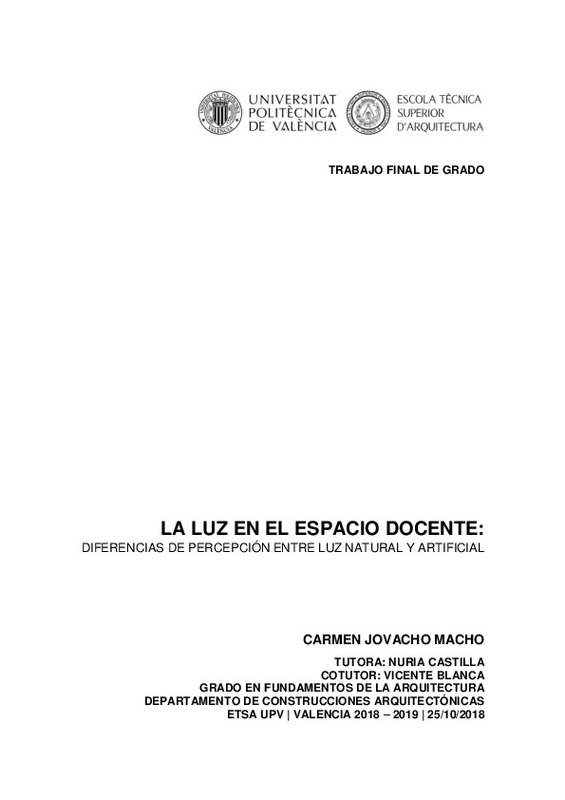|
Resumen:
|
En el presente trabajo se analiza la diferencia en la respuesta afectiva que tienen los estudiantes ante la iluminación artificial o natural de sus aulas. Se realiza un estudio de campo en la Universidad Politécnica de ...[+]
En el presente trabajo se analiza la diferencia en la respuesta afectiva que tienen los estudiantes ante la iluminación artificial o natural de sus aulas. Se realiza un estudio de campo en la Universidad Politécnica de Valencia, con una metodología de trabajo dentro del ámbito de la Ingeniería Kansei y basado en la Semántica Diferencial. Gracias al uso de esta metodología el análisis de la percepción se basa en el usuario, dejando a un lado que los parámetros estén determinados exclusivamente por los expertos.
Se analiza la percepción de una muestra de 521 alumnos respecto al ambiente lumínico de 17 aulas, 5 iluminadas con iluminación natural, 6 iluminadas mediante iluminación artificial y 6 iluminadas mediante iluminación natural y artificial. Los resultados obtenidos muestran que la estructura afectiva de los estudiantes, con relación al ambiente luminoso, se puede expresar mediante 6 ejes semánticos independientes: sorprendente, claro, tranquilo, uniforme, animado y deslumbrante. Según estos ejes se observa que, para una iluminación natural, las sensaciones de sorpresa, claridad, tranquilidad y animado son positivas para los alumnos, en contra posición se encuentran las sensaciones de uniformidad y deslumbramiento, es decir, los estudiantes sienten menos uniformidad y menos deslumbramiento si la iluminación del aula es con iluminación natural.
Los resultados pueden valer como punto de partida para una mejora de los ambientes luminosos de los espacios docentes en función del tipo de iluminación más adecuado.
[-]
In the present work is been analyzed the effective response that students give about the impact of natural and artificial lighting in their classrooms. A field study is carried out at the Polytechnic University of Valencia, ...[+]
In the present work is been analyzed the effective response that students give about the impact of natural and artificial lighting in their classrooms. A field study is carried out at the Polytechnic University of Valencia, with a work methology within the field of Kansei Engineering and based on Differential Semantics. Thanks to the mentioned methodology, the perception analysis is based on the user, disregarding the parameters which are determined exclusively by the experts.
The perception of a sample of 521 students is analyzed with respect to the lighting environment of 17 classrooms, 5 illuminated with natural lighting, 6 illuminated by artificial lighting and 6 illuminated with natural and artificial lighting. The obtained results show that the affective structure of the students, in relation to the luminous environment can be expressed through 6 independent semantic axes: surprising, clear, calm, uniform, animated and dazzling. According to these axes it is observed that, for a natural illumination, the sensations of surprise, clarity, tranquility and animation are positive for the students, in opposition to the sensations of uniformity and glare, the students feel less uniformity and less glare if the classroom lighting is with natural lighting.
The results can be used as a starting point for an improvement of the lighting environments of the teaching spaces according to the most appropriate type of lighting.
[-]
|







